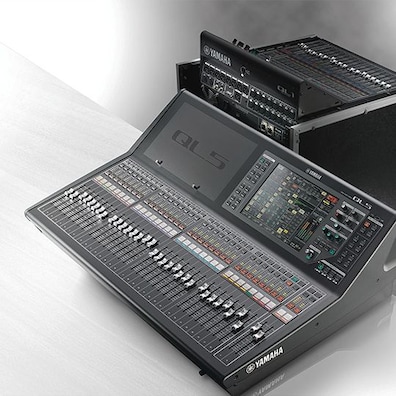Yamaha QL5 Stars At Subfrantic’s Arabian Nights
Every summer, some of the biggest names in Arabic music congregate at London’s Grosvenor hotel for a series of concerts. Subfrantic Production Services provides the full technical production for the shows, which this year featured two Yamaha digital mixers for the first time.

Subfrantic has been involved with the shows for the past five years, which this year featured singers including Mohamed Abdu, Rabeh Sakr, Majid Al Mohandes, Balquees, Ellisa, Nahwa and Shatha Hassoun. All the performances are backed by an Arabic orchestra.
“It’s not an orchestra in the western sense, it features a lot of traditional Arabic instruments,” says Subfrantic technical director Sean Murphy. “It’s a specialised sound and the setup has to be right. As a company, we spent the past five years developing a unique understanding of these requirements.”
The orchestra usually comprises a full drum kit, nine hand-drummers playing various percussion, bass guitar, electric guitar, oud (a traditional Arabic guitar-like instrument), nay (Arabic flute), quanoun (zither-style instrument), seven violins, two cellos, up to four keyboards, three backing vocals and the lead vocalist
As in previous years, Subfrantic deployed a Yamaha CL5 at front of house, manned by Gareth Cox. For the first time this was joined by a QL5 on monitors, with Sean at the helm. Inputs and outputs were handled by two Rio3224-Ds.

“Many of the inputs for this show are from microphones, to accommodate the traditional instruments,” says Sean. “It can be tricky because a lot of them are very sensitive condensers in an extremely loud environment. In order to keep things simple, we used the R-series i/o units and shared the head amps. Once Gareth and I were happy, we switched both boards to digital trim and took it from there.”
Monitoring for the artists was via a combination of wedges and in-ears. One unusual aspect is that the singer has three wedges. “It was something an artist asked me for a while ago and we’ve used ever since with this particular type of music,” says Sean. “It gives the singer a stereo mix of all the instruments and music on the L+R send, then just his or her vocal in the centre wedge to keep it clean.”

Previously Sean had used a console by a different manufacturer on monitors, but he was really happy with the choice of the QL5 this year.
“It’s such a compact frame for the amount it can do. I don’t really know of another 24-bus, 64 channel mixer of that size,” he says.
“In this environment, probably more than any other style of show I do, it is so important to be able to access things in a split second. You have a lot of people on a very loud stage asking for lots of things all at the same time. Having 34 faders that are all completely customisable means I have everything I need right in front of me all the time.”
Another advantage of using the QL5 was Yamaha’s StageMix app, which helped to mitigate the physical challenges of a stage that is 22m wide but only 3.5m deep
“StageMix was a lifesaver this year. The QL5 is on the far side of the stage from the drummer and percussion and it’s so shallow that it’s near impossible to see them during the show,” says Sean. “Having StageMix on my iPad meant that I could walk round to the other side of the stage and keep an eye on everybody during the show. All of the instrumentalists were also very impressed when I was using it during soundcheck; it meant they could ask me for anything regardless of whether I was at the board or not.”
With around 60 inputs, using Dante meant there was no need for an analogue split system, making life easier for the Subfrantic crew and the stage a lot tidier.
“Also, with us using Dante across the whole system, it meant that we could easily take a multi-track recording using Nuendo Live. This was an added bonus for our client,” Sean concludes.


